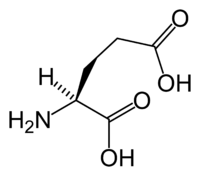
Photo from wikipedia
Alcohol (ethanol) is a widely used and abused drug with approximately 90% of adults over the age of 18 consuming alcohol at some point in their lifetime. Alcohol exerts its… Click to show full abstract
Alcohol (ethanol) is a widely used and abused drug with approximately 90% of adults over the age of 18 consuming alcohol at some point in their lifetime. Alcohol exerts its actions through multiple neurotransmitter systems within the brain, most notably the GABAergic and glutamatergic systems. Alcohol’s actions on GABAergic and glutamatergic neurotransmission have been suggested to underlie the acute behavioral effects of ethanol. The striatum is the primary input nucleus of the basal ganglia that plays a role in motor and reward systems. The effect of ethanol on GABAergic and glutamatergic neurotransmission within striatal circuitry has been thought to underlie ethanol taking, seeking, withdrawal and relapse. This chapter reviews the effects of ethanol on GABAergic and glutamatergic transmission, highlighting the dynamic changes in striatal circuitry from acute to chronic exposure and withdrawal.
Journal Title: Handbook of experimental pharmacology
Year Published: 2018
Link to full text (if available)
Share on Social Media: Sign Up to like & get
recommendations!